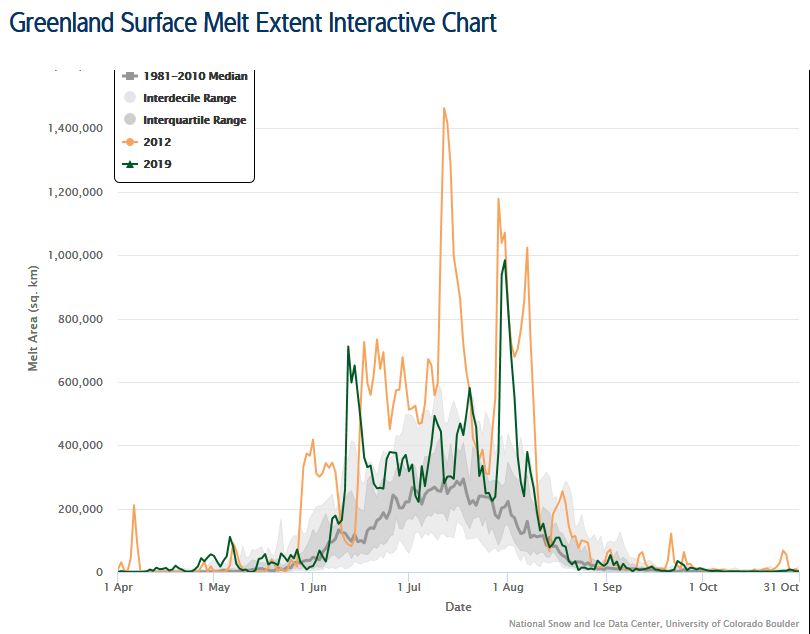Overall, the team estimated that as much as 600 billion tons of Greenland’s ice was lost in 2019. That means the ice sheet’s surface mass balance plunged about 320 billion tons below the annual average for 1981 to 2010.
The reason for this devastating year isn’t as clear-cut as just rising temperatures. The previous worst year on record was 2012, when ice mass dipped 310 billion tons below the average. But temperatures were warmer in 2012 than 2019, so the team figured there must be other factors at play.
On closer examination, the researchers discovered that high-pressure conditions lingered over Greenland for much longer than usual last year. This triggered several mechanisms that all added up to increased ice loss.
These conditions prevented clouds forming over southern Greenland, which let in more sunlight, melting more surface ice. At the same time, fewer clouds meant less snowfall so less ice was being replenished. Snow’s brightness also helps reflect some sunlight away, and without it more ice absorbed the heat, accelerating melting.
Unfortunately, the researchers say that current climate models don’t account for this kind of mechanism. That means that future melting may be twice as bad as is currently predicted.
It looks like Greenland’s weird weather is just another symptom of climate change, which began making itself even more apparent in 2019. The year was one of the warmest on record, with July the individual hottest month humans have ever recorded. Ocean temperatures reached new heights, and Australia saw its hottest year ever, punctuated with devastating bushfires.
https://newatlas.com/environment/weird-weather-greenland-ice-loss-record/

